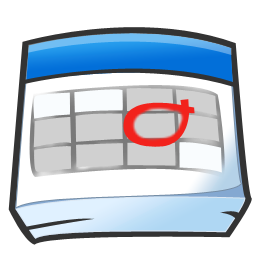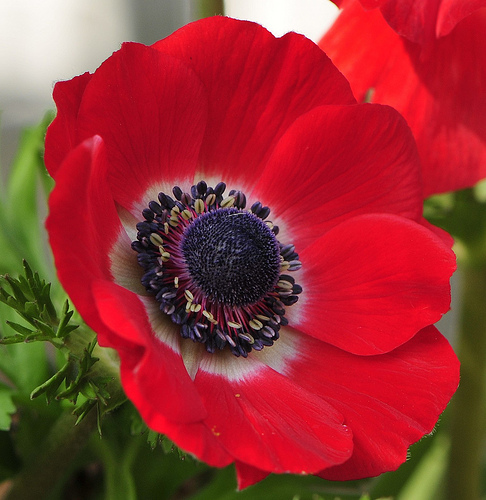Not to be confused with sea anemone, a stinging polyp that lives under the sea, the land loving anemone is a spring flowering bulb that blooms right into the summer, and in some cases autumn. There are approximately 120 species of anemone, aka “windflower”, giving the home gardener plenty of cool varieties to choose from. What’s more, they come in several colors and different heights (from 6 inches to 30 inches).
Anemone is a great flower for naturalizing in the lawn and grows best in a light (i.e., sandy loam) soil. It can also be planted as a ground cover (it spreads easily) and in a woodland setting. It makes a great cut flower.
The center of the anemone flower resembles a daisy. The silky petals that surround it blow away shortly after the plant flowers. Anemone is an interesting variety of flower as it grows from a corm, tuberous root and rhizome, depending on the variety of anemone.
When to plant:

Plant in the fall in areas where it is hardy (zones 4-8). Plant after the ground has cooled, which means late September to early October in the northern states (zone 4), and into November in the southern states (zones 6-8). Click on the calendar (right) to find your climate zone by zip code. Anemone can also be planted in early spring for mid to late-summer flowering. When planted in spring, soak the bulbs for a couple of hours to aid germination.
Where to plant:
Plant in full sun to partial shade. Anemones prefer loose sandy and/or compost-rich soil. If you have clay soil, make sure to add organic material while planting.
Planting depth:
Plant anemone bulbs no deeper than three inches. The tips of the bulb should be pointed upward but don’t get too concerned about this. Most bulbs, including anemones, quickly figure out which direction is up.
Spacing:
Anemones should be spaced 2-6 inches apart, depending on the variety.
How to plant anemone bulbs:
Let’s face it, most bulb planting methods have us spending a lot of time bending over or on our knees. The ProPlugger 5-IN-1 Planting Tool allows you to do most of the hard work of digging your bulb planting holes from a standing position.
To pull plugs, slide the 2″ or 4″ metal depth ring onto the bottom of the main tube to set the desired depth of the planting hole. Or to dig a 6″ deep hole, no depth ring is needed.
(Step, Twist and Pour) Step down on the foot pegs until the depth ring bottoms out against the ground. Give the 5-IN-1 a slight twist to break the soil plug free and pull straight up on the handlebars. To empty the plugs, simply turn the plugger upside down and pour the plugs out of the top of the tube.
The soil gets stored inside the tool as you work, enabling you to dig over a dozen planting holes, one right after another. Place the bulb in the planting hole, pointed tip facing upward. Fill in the hole with the soil you removed with the 5-IN-1. Firm the soil over the bulb with your foot.
Feeding:
When the leaf tips begin to poke out of the ground, apply a 5-10-10 fertilizer. About the time of flowering, top dress with a 0-0-10 or 0-0-50 fertilizer. Fertilize in the spring of each year with a 5-10-10 fertilizer or all purpose fertilizer used for feeding flowers. Mulching around the plants with aged compost or well rotted manure will achieve the same effect as a light feeding of fertilizer.
Disease and pest issues:
This plant is susceptible to slug and snail damage in early spring and summer. Leaf spot and powdery mildew can occasionally become a problem. Proper plant spacing goes a long way in preventing any fungal disease problems. If these diseases become a problem treat with Captan or the copper-based fungicide Soap Shield from Gardens Alive before signs of infestation occur.
Hardiness zone:
Anemone is hardy in zones 4-9, depending on variety.
Popular varieties of anemone:
The poppy anemone (A. coronaria) is one of the most popular of the hybrid anemones. There are several different varieties of these showy flowers to choose from. Other popular anemone varieties include Gretian windflower (A. blanda), ‘Hadspen Abundance’ (Anemone hupehensis), ‘Richard Ahrens,(Anemone hybrid), and ‘Margarete, ( Anemone hybrid).
Neil Moran is a horticulturist and author of three books on gardening. He is also the creator and author of the garden blog North Country Gardener
Additional resources:
Pacific Bulb Society
National Gardening Association
Be sure to check out the helpful information on our website, including other uses for the ProPlugger including:

